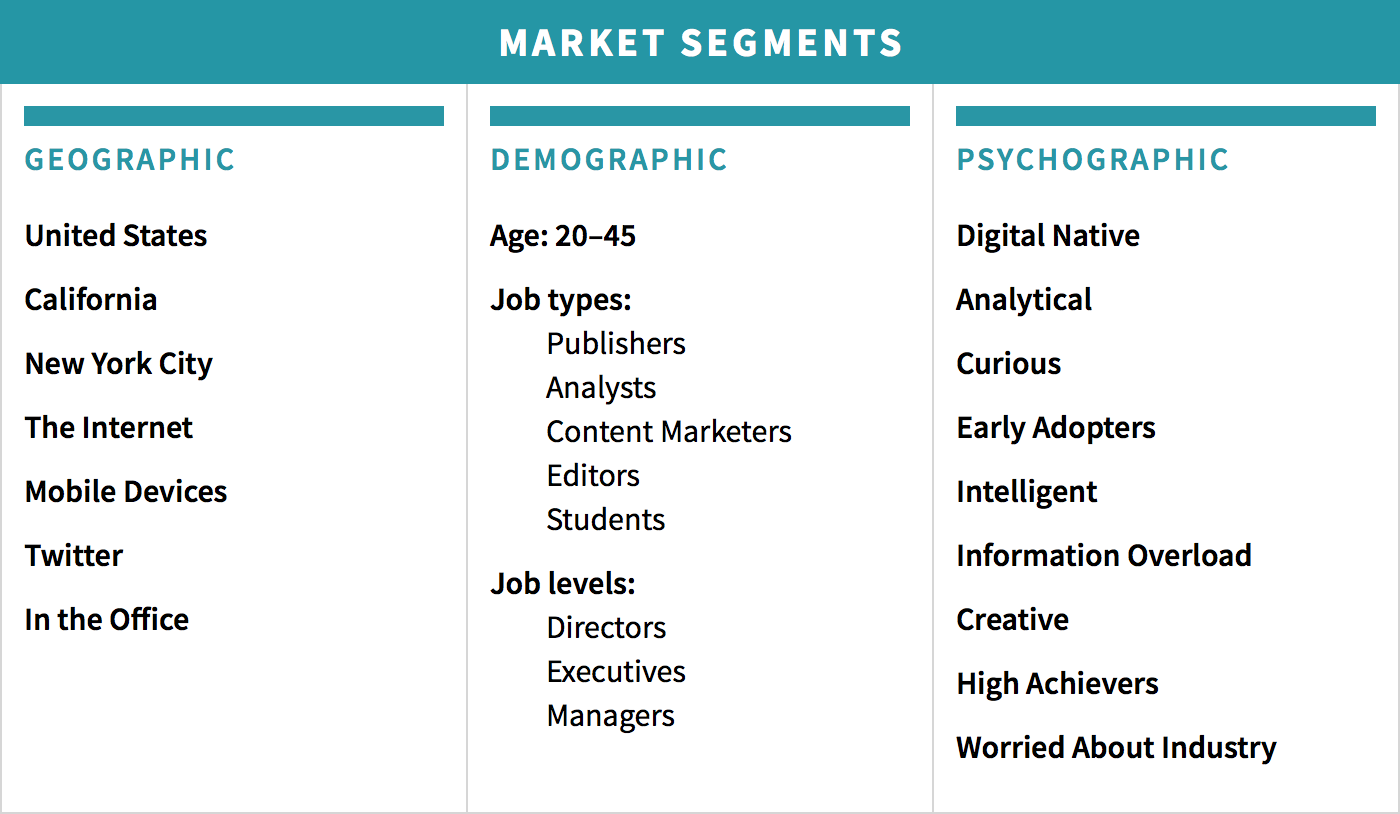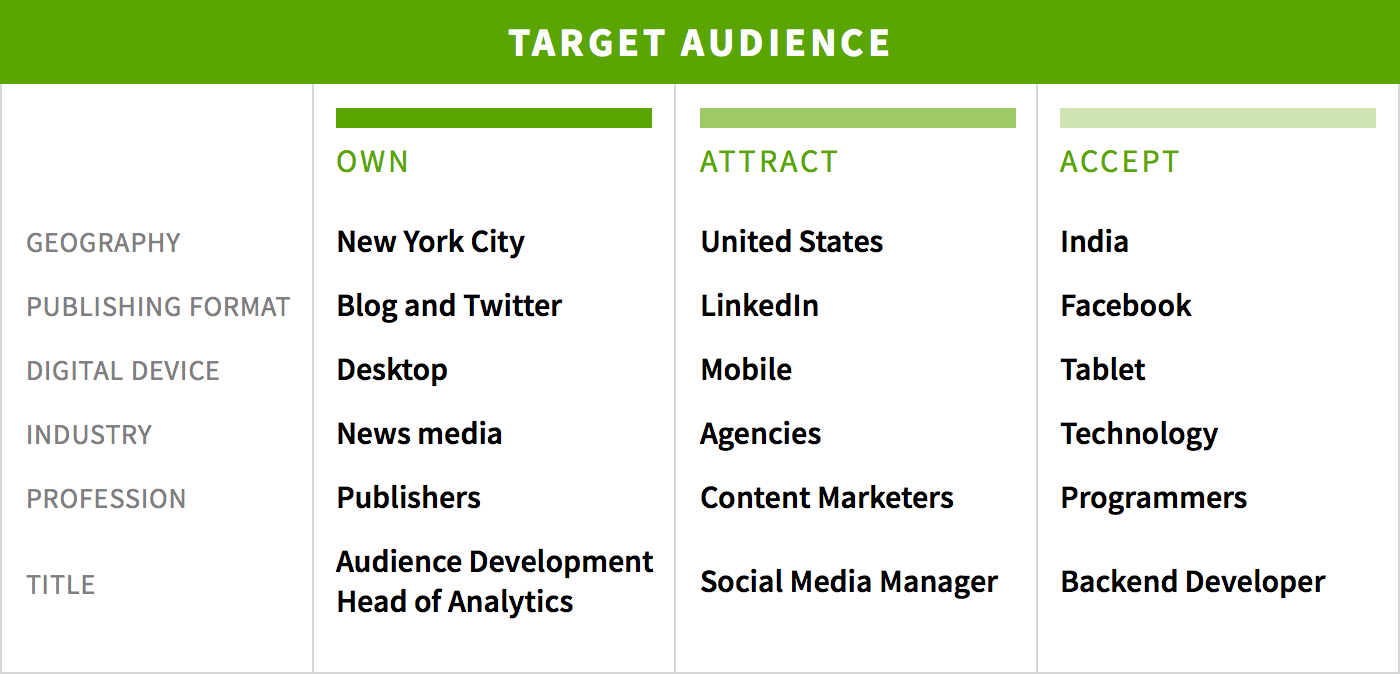Here’s the Secret Sauce to Audience Development
If it seems like every year the launch of a hot new digital publisher causes the industry to rethink itself, it’s because that’s actually happening — low barriers to entry have made digital media a very crowded space in which to do business.
With a glut of new players, publishers are under more pressure than ever to define themselves in a way that gives them an advantage over the competition. New teams of audience development editors are being assembled to put these advantages to work finding new readers, but outside of evangelizing the best practices of social media in the newsroom, how can audience development affect content strategy?
Defining and crafting new audiences has been a preoccupation of other industries for decades, but remain relatively unexplored in audience development on the web. While the divide between the newsroom’s reporting and the business side is sacrosanct in publishing, it doesn’t mean that the frameworks used by the business side can’t also be applied to newsroom’s audience development strategy.
Let’s explore how that might work in a newsroom.
Step 1: Segmentation
Dividing customers (or in our case audience members) into different segments gives a better understanding of the market as a whole and it identifies which parts of the market to target.
Marketing’s forefathers divided markets into three basic segments — geographic, demographic and psychographic.
Geographic segments refer to readers in the same physical or even digital location. Demographics are the reader’s age, gender, income, marital status — the type of stuff in census data or a driver’s license. Psychographics are harder to define but refer to a person’s lifestyle, personality, interests or values.
The more subsets of these three categories, the more thorough an analysis of the market becomes. How do we do this?
The process is a lot like tagging a story. Tagging helps identify a story within the ecosystem of a publication so that we can understand what section it belongs in or what topics it covers. Melody Kramer recently challenged newsletter subscribers to think of as many ways to categorize and tag a story as possible. Here, we suggest the same, but for the audience.
To provide an example, here are market segments for the Parse.ly blog:

Do this one evening over beers with editorial colleagues from different sections. Deep segmentation can also help a legacy media company re-position itself in a digital space.
Step 2: Target specific segments of the audience
Tom Negrete, Director of Innovation and News Operations at The Sacramento Bee, knows he’s going to get a lot of traffic from people in the Bay Area, but he recently noticed that the paper’s state capitol coverage was getting a ton of traffic from Northern Virginia.
“My guess is that those people in Virginia are lobbyists, influential people with probably high incomes,” he said. “If we can determine that, then shouldn’t The Bee say ‘just because they’re not in market doesn’t mean they’re not valuable.’
“Once we can establish who they are and why they’re coming to us, then can our ad folks can envision a better way to go to market.”
This occurrence demonstrates one of marketing’s most common frameworks — own/attract/accept. This framework asks a company to target markets by stating which segments it wants to “own,” which ones to attract and which ones to accept.
In this case, The Sacramento Bee owns the Bay Area. This is where the bulk of its customers come from. It’s covering state workers in the Bay Area in hopes of owning that segment of the Sacramento audience.
But it’s also attracting customers from other areas who happened to be interested in the topic. The Bee may even decide to tailor coverage or advertising to this audience at some point to further attract these peripheral audiences.
Any other readers who stumble onto the blog will certainly be “accepted” — who’s going to turn away a customer? — but The Bee may not put resources into making sure they stick around.
This scenario for own/attract/accept — owning a city, attracting the nation and accepting others — is pretty common for newspapers, which are typically stationed in a metro area; new media companies have the opportunity to really be creative with it.
In the Parse.ly blog example, we can breakdown some of the segments (or tags) we used in the previous example and rank them according to priority to form a detailed own/attract/accept framework:

Step 3: Identify your target audience’s needs
Politico established itself as a premiere source for inside-the-Beltway news, and it likely launched in hopes of “owning” people who worked in politics. In 2010, the company identified an unserved need of that audience segment — real-time, granular news on policy, bills and congressional happenings.
The result was Politico Pro, a pricey, customizable subscription service that many scoffed at when it launched, but it’s turned into a lucrative revenue source for the company.
Combining segmentation with the own/attract/accept concept should bring your market target into focus. Now comes the big question: How can you serve this audience in a way that competitors can’t?
Based on the audience segmentations in each of the own/attract/accept categories, you can start to brainstorm what kind of needs your audience has, and how you can meet them in ways that are consistent with your brand, content and products.
The Parse.ly blog launched in hopes of meeting the needs of publishers and Parse.ly customers. The very post you’re reading is part of Parse.ly’s hope to meet an audience development manager’s need for advice or ideas in a relatively new role!
Putting this to work
Journalists don’t like using marketing terms; I know because I didn’t either when I was a reporter. But I’ve also been through business school, and there I became a believer that these marketing frameworks could help publishers immensely.
In this time of stiff competition and big business model questions to publishers, audience development teams, and anyone with a stake in the game at media companies would be wise to take a cue from other industries that have created ways to identify customers in the context of an entire market. Publishers have to know who their readers are and what they want so as to produce the best reader experience possible.
How much of this do you know about your audience? Tweet at us to share tips on understanding your readers, or surprises you have found about what they need.